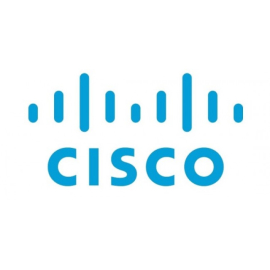Интерфейсные или линейные модули Cisco (linecard, interfacemodule) позволяют расширить маршрутизатор или модульную платформу требуемым функционалом, включая нужные порты доступа на скоростях 1GbE, 10GbE, 40GbE или 100GbE. В основном под каждую серию модульных маршрутизаторов или шасси Cisco выпускает различные модули расширения под определенную линейку устройств, но в большинстве случаев, модуль можно использовать не в одной линейке (напр. интерфейсный модуль Cisco EHWIC-4ESG совместим с маршрутизаторами Cisco ISR G2 1900 серии, 2900 серии и 3900 серии).
В зависимости от платформы, интерфейсный модуль Cisco может поддерживать небольшое количество портов, как в случае с небольшими маршрутизаторами Cisco 1900 серии, так и 48 портов в одном модуле для шасси 7600 серии. Интерфейсные модуля и платы Cisco поддерживают множество различных интерфейсов и могут использоваться как в сети Ethernet, так и в других сетях передачи данных.
Технические характеристики интерфейсного модуля Cisco SPA-4XCT3/DS0-V2:
|
Product compatibility |
· Cisco 7600 Series Routers · Cisco ASR 1000 Series Aggregation Services Routers · Cisco ASR 9000 Series Routers (4-port only) |
|
Minimum software version |
· Cisco 7600 Series Routers with Cisco IOS® Software Release 15.4(2)S and Cisco IOS XE Software Release 3.12.0.0S · Cisco ASR 1000 Series Router with Cisco IOS XE Software Release 3.12.0, 3.11.2, or 3.10.3 · Cisco ASR 9000 Series Router with Cisco IOS XR Software Release 5.2.0 |
|
Port density per SPA |
4-port |
|
Physical interface |
· 1.0 and 2.3 RF connectors (75-ohm impedance) · 1.0 and 2.3 RF-to-BNC adapter cable option |
|
Protocols |
Serial encapsulations: · High-Level Data Link Control (HDLC) · Point-to-Point Protocol (PPP), RFC 1662 · Frame Relay, RFC 1490 Multilink support (bundle limit dependent on number of links per bundle; maximum 12 T1 links per bundle) MLPPP, RFC 1990 MLFR, FRF.16 LFI over Frame Relay (FRF.12) and MLPPP |
|
Features and functions |
Up to 4 T3 ports · Up to 112 T1 ports (28 T1 multiplexed onto a single T3) · Up to 1024 n x DS-0 channels (where n is 1 to 24) with no T3 configured · Up to 400 n x DS-0 channels (where n is 1 to 24) with one or more T3 configured · Support for full-rate (clear channel) T3, Channelized T3 to T1, full-rate T1, Channelized T1, and fractional T1 · Integrated DSUs · Internal or line-derived (loop) clocking selectable on each T3 or T1 · Loopback capabilities: ◦ Local and remote loopback at the T3 and T1 levels ◦ Response to embedded loopback commands ◦ Insertion of loopback commands into transmitted signal · Bit-error-rate-testing (BERT) pattern generation and detection per channel ◦ Programmable pseudorandom pattern up to 32 bits long · T3: All 0s, all 1s, 215, 220, 220 Quasi-Random Signal Sequence (QRSS), 223, alternating 0s and 1s, 1-in-8, and 3-in-24 · T1: All 0s, all 1s, 211, 215, 220, 220 QRSS, 223, alternating 0s and 1s, 1-in-8, and 3-in-24 ◦ 32-bit error-count and bit-count registers ◦ Fully independent transmit and receive sections ◦ Detection of test patterns with bit error rates up to 10-2 · 24-hour history maintained for error statistics and failure counts, at 15-minute intervals · 16- and 32-bit cyclic redundancy check (CRC); 16-bit default |
|
T1-specific features |
· Full-duplex connectivity at T1 rate (1.536 MHz) · D4 Super Frame (SF) or Extended Super Frame (ESF) framing · ANSI T1.403 and AT&T TR 54016 Facility Data Link (FDL) support · Alarm monitoring: ◦ Alarm indication signal (AIS) ◦ Out of frame (OOF) ◦ Far-end alarm failure (yellow or distant alarm) · Performance data collection: ◦ CRC and bit errors ◦ Framing bit errors (FERR) ◦ Line errored seconds ◦ Far-end errored seconds ◦ Far-end severely errored seconds ◦ Far-end unavailable seconds |
|
T3-specific features |
· Full-duplex connectivity at T3 rate (44.736 MHz) · C-Bit or M23 framing · Subrate and scrambling support of Quick Eagle Networks (formerly Digital Link), Larscom, ADC Kentrox, Adtran, and Verilink DSUs · Binary 3-zero substitution (B3ZS) line coding · Maintenance data link (MDL) · T3 far-end alarm and control (FEAC) channel support · Line build-out up to 450 ft (135m) · Alarm monitoring: ◦ AIS ◦ OOF ◦ Loss of signal (LOS) ◦ Far-end receive failure (FERF) · Performance data collection: ◦ Line coding violation (LCV) ◦ Framing bit errors (FERR) (F- or M-bit errors) ◦ P-bit error counts (path-parity errors) ◦ C-bit error counts ◦ Far-end block error (FEBE) counts |
|
Reliability and availability |
· OIR · Single SPA software reset |
|
MIBs |
· RFC 2495 MIB (DS-1/E1 MIB) · RFC 2496 MIB (DS-3 MIB) |
|
Network management |
Simple Network Management Protocol (SNMP) |
|
Physical specifications |
· Weight: 0.75 lb (0.34 kg) · Height: 0.8 in. (2.03 cm) (single height) · Width: 6.75 in. (17.15 cm) · Depth: 7.28 in. (18.49 cm) |
|
Power |
· 2-port: 11.3W maximum · 4-port: 13.2W maximum |
|
Environmental specifications |
· Operating temperature: 41 to 104°F (5 to 40°C) · Storage temperature: –38 to 150°F (–40 to 70°C) · Operating humidity: 5 to 85% relative humidity · Storage humidity: 5 to 95% relative humidity |
|
Compliance and agency approvals |
CE Marking Safety · UL 60950 · CSA 22.2 No.60950 · IEC 60950 · EN 60950 · AS/NZS 3260 · TS001 EMC · CFR47 Part 15 · ICES 003 · EN55022 · CISPR 22 · AS/NZ 3548 · VCCI · EN55024 · EN50082-1 · EN61000-6-1 Telecom (T3) · ANSI T1 107 · T1 404 · AT&T 54014 · ANSI T1.231 Telecom (T1) · ANSI T1.403 · AT&T 54016 |





